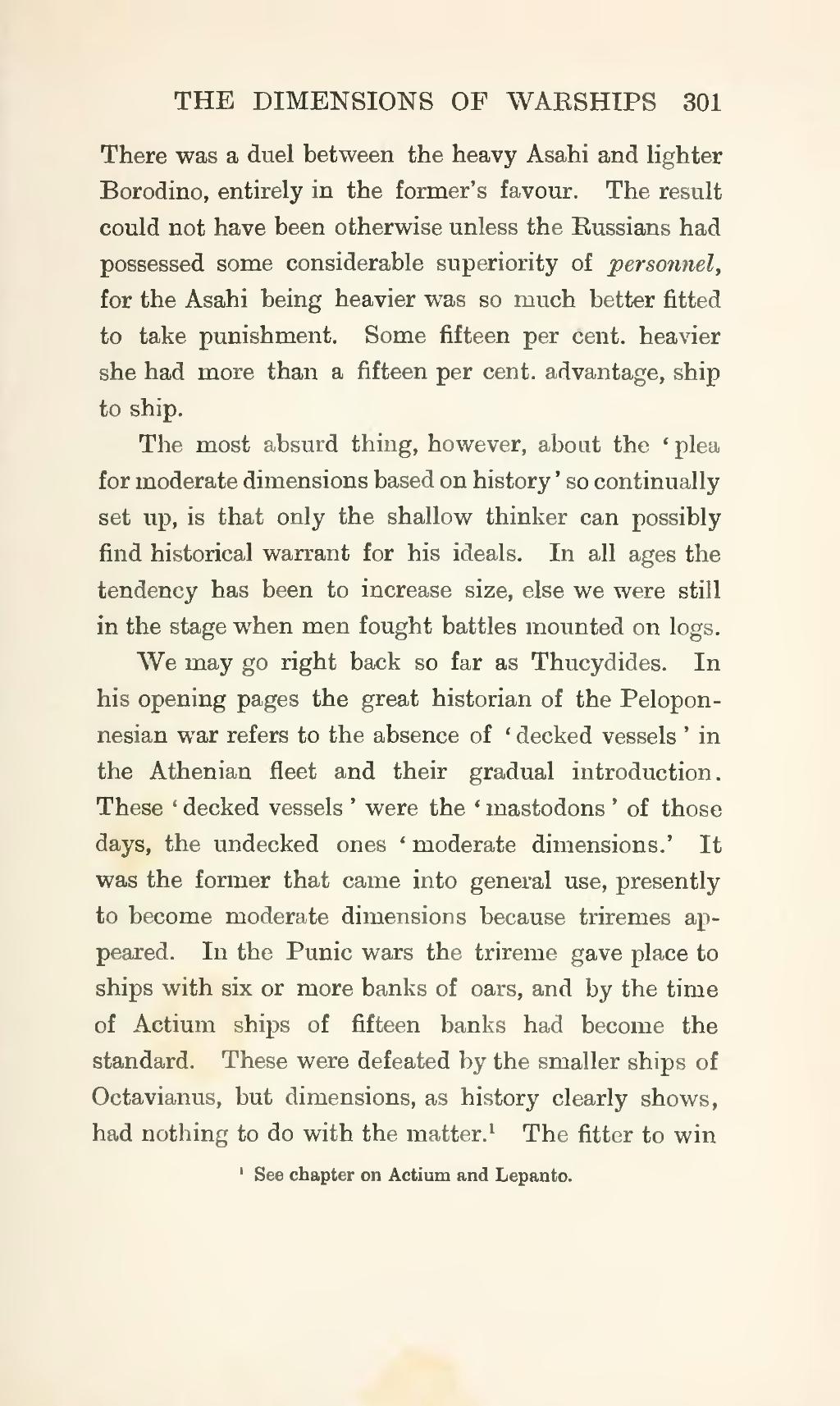There was a duel between the heavy Asahi and lighter Borodino, entirely in the former's favour. The result could not have been otherwise unless the Russians had possessed some considerable superiority of personnel, for the Asahi being heavier was so much better fitted to take punishment. Some fifteen per cent, heavier she had more than a fifteen per cent, advantage, ship to ship.
The most absurd thing, however, about the 'plea for moderate dimensions based on history' so continually set up, is that only the shallow thinker can possibly find historical warrant for his ideals. In all ages the tendency has been to increase size, else we were still in the stage when men fought battles mounted on logs.
We may go right back so far as Thucydides. In his opening pages the great historian of the Peloponnesian war refers to the absence of 'decked vessels' in the Athenian fleet and their gradual introduction. These 'decked vessels' were the 'mastodons' of those days, the undecked ones 'moderate dimensions.' It was the former that came into general use, presently to become moderate dimensions because triremes appeared. In the Punic wars the trireme gave place to ships with six or more banks of oars, and by the time of Actium ships of fifteen banks had become the standard. These were defeated by the smaller ships of Octavianus, but dimensions, as history clearly shows, had nothing to do with the matter.[1] The fitter to win
- ↑ See chapter on Actium and Lepanto.
